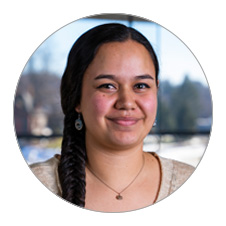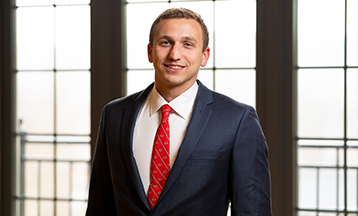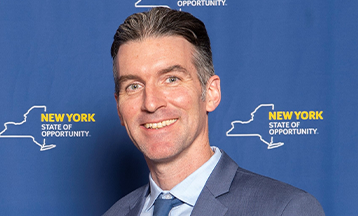-
About
Marist Commencement
Celebrating the Class of 2025
• The graduate ceremony will be held on Friday, May 23.
• The undergraduate ceremony will be held on Saturday, May 24.About
-
Academics
Marist Commencement
Celebrating the Class of 2025
• The graduate ceremony will be held on Friday, May 23.
• The undergraduate ceremony will be held on Saturday, May 24.Academics
-
Admission & Financial Aid
Marist Commencement
Celebrating the Class of 2025
• The graduate ceremony will be held on Friday, May 23.
• The undergraduate ceremony will be held on Saturday, May 24.Admission & Financial Aid
-
Student Life
Marist Commencement
Celebrating the Class of 2025
• The graduate ceremony will be held on Friday, May 23.
• The undergraduate ceremony will be held on Saturday, May 24.Student Life
- Athletics
Sage Kawelo Image

Sage Kawelo
Waianae, HawaiiAcademic School
Liberal ArtsCampus
New YorkWhat brought you to Marist? Why did you choose it?
Marist does a fair amount of recruitment in Hawaii, and my high school guidance counselor’s daughter actually went to Marist, so I was familiar with the school. For me, going away to college on the mainland was an opportunity for an adventure. I had never visited the East Coast before. I come from a large family, so I’m grateful that Marist’s financial aid package made it possible for me to pursue my education.
Describe your Marist experience so far, both academics and extracurricular activities.
The first time I visited the Marist campus was when I showed up for my freshman year! Luckily, it’s been a fantastic experience. I started out as a biology major, but I ended up being really influenced by my First Year Seminar on the drug trade [taught by Assistant Professor of History Kristin Bayer]. That class really challenged how I think about the world and made me fall in love with history as a discipline. I found myself thinking more and more about current events and wanting to have in-depth discussions about social justice. By the spring semester of my freshman year, I had changed my major to history.
In terms of campus involvement, I did volunteer work through Campus Ministry for three years at Family Services’ soup kitchen, which was great for getting acclimated to Poughkeepsie, and I’ve also been involved with Fox Pride. The project that meant the most to me was when I worked with Marist’s Asian Alliance to plan a Hawaiian night. The club reached out to several of us from Hawaii because they wanted the event to be as authentic as possible. Our theme for the evening was ethnic diversity in Hawaii, and it was a great chance to break down the myth that Hawaii is monolithic. Apart from native Hawaiians, there are many Japanese, Filipinos, Mexicans, Puerto Ricans, white Americans, so it was great to highlight that. Even better, as a result of the Hawaiian students working on this project, the Pacific Club was formed.
Was coming to New York a culture shock for you?
A little bit! Socially, the mainland feels like a different world to me. In Hawaii, everyone treats one another like family, and New York’s culture is more formal. It’s also interesting to see how race plays out differently on the mainland. Here, I’m in the minority, which is a new experience for me, so I don’t always see faces that look like mine. On the other hand, many of my roommates have been from Irish or Italian backgrounds, which isn’t common in Hawaii, so it’s been a great learning experience for me to learn more about their connection to those cultures. I’ve found that most Marist students are very interested in broadening their perspectives about race.
You recently curated a rare books exhibition in the Library. What was that experience like?
It was incredible. I’m so proud of my work on “Black Lit: The African American Narrative.” The exhibit is a collection of rare books loaned to the College by [Trustee] Alvin Patrick ’86. It includes rare first-edition books by Martin Luther King, Jr., Malcolm X, Frederick Douglass, Booker T. Washington, W.E.B. DuBois, James Baldwin, Ralph Ellison, Toni Morrison, and many others. Many of the authors were pioneers in talking about America’s struggles with race. Many knew each other and actively engaged with one another intellectually, so I tried to show that context. I was so happy that the opening reception was well attended and the collection was so well received. Lisa Lucas, who is the executive director of the National Book Foundation, spoke at the opening reception, and she told me that the books in the exhibition meant so much to her because they gave her a voice and a history. To see the impact the exhibit had on her was so rewarding. And Alvin presented me with a first-edition book on Hawaii, which was so thoughtful of him.

Are there specific faculty members who have really had an impact on you?
The History Department is the best! It’s like a family. The professors are very invested in you, both as a student and as a person. Besides Professor Bayer’s First Year Seminar, I really loved “Race in America” with [Professor of History] Robyn Rosen and [Assistant Professor of History] Steven Garabedian, as well as [adjunct instructor] Michael Panzer’s class on colonial Latin America. Dr. Panzer is amazing, and we really delved into the experiences of indigenous people in South America. Many of the classes I’ve taken focus on issues of race, class, and gender because I find those topics so fascinating. I love modern history in particular because as a person of color, my story is more likely to be included in the narrative. I also really admire [Associate Professor of History] Michael O’Sullivan because he’s so involved in the local community helping immigrants.
Truthfully, I’m grateful for all of my professors. They are always looking for ways to help you, like sending an email to tell you about an interesting graduate program or funding opportunity. I actually have a funny story about Professor Rosen that shows how much faculty at Marist care. I was complaining to her about how people in New York don’t hug as much as people back home in Hawaii, so now she makes it a point to give me a big hug every time she sees me!
Have you had any internships?
I’ve worked in College Archives and Special Collections for three years, which has been similar to an internship. Apart from the “Black Lit” exhibit, I’ve worked on other displays, done some in-depth research, and learned great skills. It’s been great preparation for a future career in museum curation. Another great experience was the Tarver Summer Internship. It’s such an amazing program – you receive a stipend, housing, academic credit, and help with transportation for the summer while you work at a local nonprofit. I worked with Hudson River Housing in the community development area. My job was to write profiles on impactful local community leaders so that more people would be aware of the great work they’re doing. The Tarver Internship was such a positive experience for me. Working at Hudson River Housing, I was treated like an adult; my ideas were respected, I was given independence, and I got to see how a large nonprofit operates.
What do you want to do after graduation?
My immediate plans are to stay in the Northeast for a year and work at a nonprofit, museum, or historical society. During that time, I’ll get some work experience under my belt and refine my thinking about graduate school.



